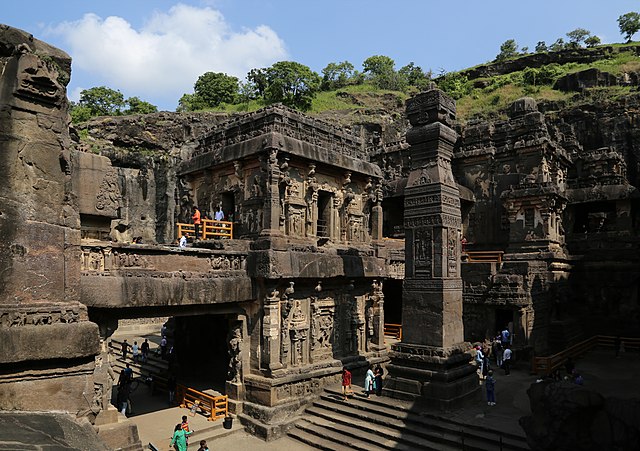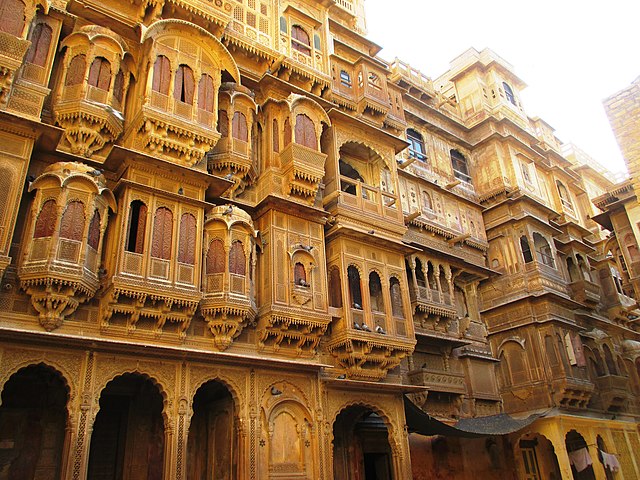Indian architecture is rooted in the history, culture, and religion of India. Among several architectural styles and traditions, the best-known include the many varieties of Hindu temple architecture and Indo-Islamic architecture, especially Rajput architecture, Mughal architecture, South Indian architecture, and Indo-Saracenic architecture. Early Indian architecture was made from wood, which did not survive due to rotting and instability in the structures. Instead, the earliest existing architecture are made with Indian rock-cut architecture, including many Buddhist, Hindu, and Jain temples.
Kailash Temple, Ellora Caves is an example of Indian rock-cut architecture.
Tamil architecture of Meenakshi Temple
Patwon ki Haveli, Jaisalmer. Rows of sandstone haveli in Rajasthan.
The Taj Mahal, Agra is the epitome of Mughal architecture.
Indian culture is the heritage of social norms and technologies that originated in or are associated with the ethno-linguistically diverse India, pertaining to the Indian subcontinent until 1947 and the Republic of India post-1947. The term also applies beyond India to countries and cultures whose histories are strongly connected to India by immigration, colonisation, or influence, particularly in South Asia and Southeast Asia. India's languages, religions, dance, music, architecture, food, and customs differ from place to place within the country.
Image: Khajuraho Kandariya Mahadeo Temple
Image: Palitana
Image: Mahabodhitemple
Image: Golden Temple India








